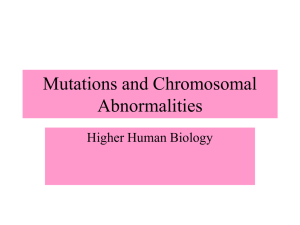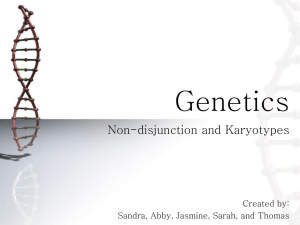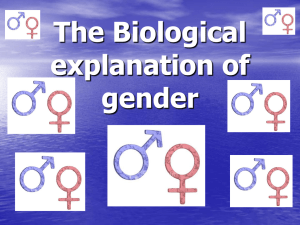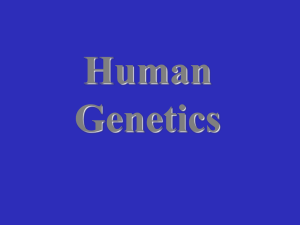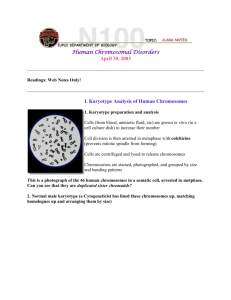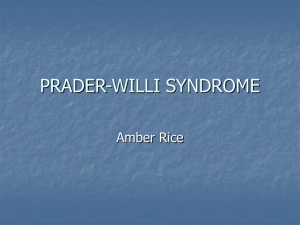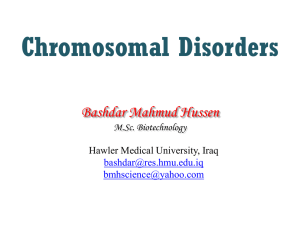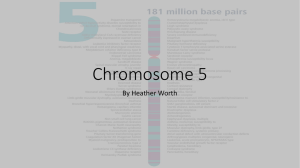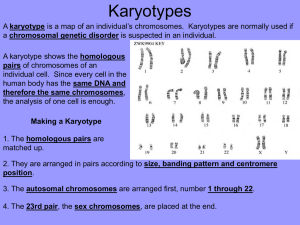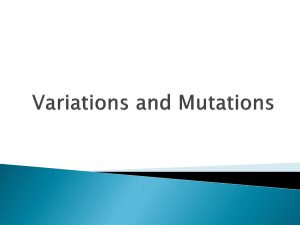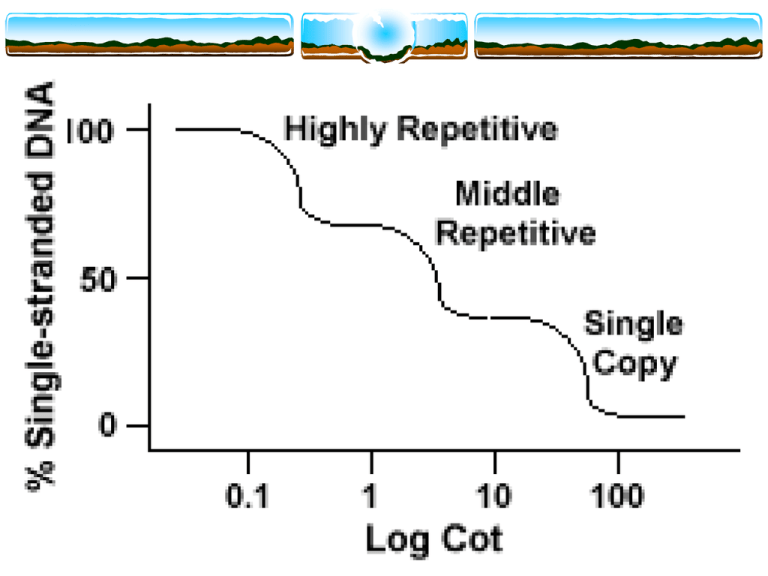
The Ac-Ds System
Chromosome Aberrations
Chromosome Aberrations
Variations in the number and/or arrangement.
Chromosome abnormalities are passed on to
offspring in a predictable manner, resulting in
unique genetic outcomes.
Definitions
Euploid: An organism or cell with the correct
number of chromosomes.
Aneuploid: An organism that has lost or gained an
individual chromosome, but not an entire set.
Monosomy: The loss of a single chromosome from
an otherwise diploid genome.
Trisomy: The gain of a single chromosome from an
otherwise diploid genome.
Definitions
Polyploid: An organism with more than two entire
sets of chromosomes.
Triploid: An organism with three sets of
chromosomes.
Tetraploid: An organism with four sets of
chromosomes.
Note: polyploidy can be the normal condition in
plants.
Notes on Chromosome Abnormalities
Most of the examples will be conditions observed in
humans. Often the abnormalities produce a
negative effect.
In animals, the loss of function usually prevents the
animal from being vigorous such that it does not
become a member of the breeding population, and
the conditions are not preserved. (Selection
pressure)
Non-Disjunction
Non-disjunction occurs when chromosomes do not
assort evenly during meiosis, such that the
resulting gametes have either extra chromosomes
or not enough chromosomes.
Non-disjunction may occur during either meiosis I or
meiosis II.
Non-Disjunction: Anaphase I
Non-Disjunction: Anaphase II
Non-Disjunction
Klinefelter Syndrome: (47:XXY) An extra X
chromosome; males, may be unusually tall (>6 ft),
underdeveloped testes, usually infertile, some
feminization. ( to XXX, XXXX, more severe)
Turner Syndrome: (45:X) Loss of one X
chromosome; females characterized by short
stature (<5 ft), subfertile ovaries and inadequate
secondary sex characteristics.
Klinefelter Syndrome
Monosomy
Turner Syndrome is an example of monosomy, or
loss of a chromosome.
Loss of autosomes (non-sex chromosomes) are not
usually tolerated in either humans or animals
(organism dies during development).
As usual, there is something of an
exception.
Partial Monosomy
Cri-du-Chat (“Cry of the cat”) syndrome: (46:-5p)
Due to a partial deletion of chromosome 5; infants
have a high-pitched, mewling cry, due to abnormal
development of the larynx and glottis. Infants are
also characterized by abnormal gastrointestinal
tract, mental and cardiac development.
The longer the deletion, the more severe the
complications.
Trisomy
Trisomy 21: Down Syndrome; impaired mental and
cardiac development. Affected individuals usually
live to the mid30s.
Trisomy 13: Patau Syndrome; affected individuals
are not mentally alert, have a cleft palate, may
exhibit polydactyly (extra digit on hands or feet),
Chromosome Rearrangements
These
are variations in the structure and
arrangement of chromosomes
Note that rearrangement of chromosomes may
exert a positional effect, such that genes may be
suppressed or expressed by moving from one place
in the genome to another.
Animation Credits
The animation clips were created by Dr. Lester
Newman, Professor of Biology at Portland State
University
http://www.irn.pdx.edu/~newmanl/moviepage.html
Duplication
Deletion
May involve loss of a whole chromosome (Turner
syndrome) or part of one chromosome.
A partial deletion of chromosome 5 is responsible for
the partial monosomy of Cri-du-Chat syndrome.
46:-5P Deletion in Cri-du-Chat
Translocations
Portions of chromosomes trade places.
Deletion
Reciprocal Translocation
Robertsonian Translocations
Familial Down Syndrome
A Robertsonian translocation is responsible for about
5% of Down syndrome incidence.
In these cases, one of the parents will have a
translocation of chromosomes 14 and 21. As a
result, 25% of that person’s gametes will have
three copies of chromosome 21 (two normal, plus
most of another one attached to chromosome 14).
Note that in this case, the affected individual has the
normal complete number of 46, but one of the
copies of 14 possesses the translocation.
Inversions
Portions of a chromosome become reversed.
Inversions may or may not involve the
centromere
Inversions
Paricentric: The centromere IS part of the
inversion. (To help you remember: Paricentric IS)
Peracentric: The centromere is NOT part of the
inversion.
Consequences of Inversions
If only one homologue of a pair experiences an
inversion, normal linear synapsis cannot occur
during meiosis.
Recombination may not occur at all, or if it does,
will produce gametes with duplications and
deletions. Often, gametes with broken
chromosomes will form.
Fragile Sites—Fragile X Syndrome
Site along X-chromosome that is prone to breakage.
Occur in fetuses of women who are deficient for the
B-vitamin folic acid.
Associated with a particular form of mental
retardation and/or attention deficit disorder.
Fragile Sites and Cancer
A number of fragile sites have been associated with
cancer, particularly one site on chromosome 3.
The gene inactivated by the break has been shown to
be involved in cancer development in a number of
tissues.
It is not known if breakage at the fragile site causes
cancer or if activity of cancerous cells induces the
break.

